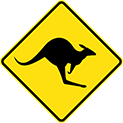We still have promotional space for your new fashion label on ozonlineshopping.
Starting your own fashion label in Australia in 2023 can be an exciting and rewarding venture. With a thriving fashion industry and a diverse consumer market, there are ample opportunities for creative entrepreneurs to establish a successful brand. Here’s a comprehensive guide on how to start your own fashion label in Australia:
- Define Your Brand Identity: Before diving into the practical aspects of starting a fashion label, it’s crucial to define your brand identity. Consider your target market, unique selling proposition, and the aesthetic and values you want your label to represent. Create a brand story and mission that resonates with your audience and sets you apart from competitors.
- Conduct Market Research: Research the Australian fashion market to understand consumer trends, preferences, and gaps in the market. Identify your target audience, their buying habits, and their price range. This research will help you refine your product offerings, pricing strategy, and marketing approach.
- Develop a Business Plan: A well-structured business plan is essential for guiding your fashion label’s growth. Outline your goals, target market, competitive analysis, marketing strategies, financial projections, and operational plan. This plan will serve as a roadmap for your business and will be helpful when seeking funding or investors.
- Create a Strong Brand Name and Logo: Choose a memorable and unique brand name that reflects your fashion label’s identity. Ensure that the name is legally available for use by conducting a trademark search. Develop a visually appealing and representative logo that can be used across various marketing platforms.
- Source Suppliers and Materials: Identify reliable suppliers for fabrics, trims, and other materials needed for your fashion label. Consider sustainability and ethical practices when selecting suppliers. Establish relationships with manufacturers or production partners who align with your brand values and can deliver the quality and quantity required.
- Design and Create Samples: Develop your fashion designs and create samples for your initial collection. If you’re not a designer yourself, collaborate with freelance designers or hire in-house designers. Pay attention to the quality, fit, and functionality of your designs, and seek feedback from potential customers or industry professionals.
- Set Up Production and Manufacturing: Decide whether you will produce your fashion items in-house or outsource production. If outsourcing, conduct thorough research to find reputable manufacturers or production facilities that can meet your quality standards and production volume. Ensure clear communication, transparency, and quality control throughout the production process.
- Establish an Online Presence: In today’s digital age, an online presence is crucial for any fashion label. Create a visually appealing and user-friendly website to showcase your brand and products. Optimize your website for e-commerce, allowing customers to browse and purchase your fashion items online. Leverage social media platforms to engage with your audience, share your brand story, and drive traffic to your website.
- Plan Marketing and PR Strategies: Develop a comprehensive marketing and PR strategy to raise awareness about your fashion label. Utilize a mix of online and offline marketing channels, including social media advertising, influencer collaborations, fashion events, public relations, and partnerships. Engage with fashion bloggers, stylists, and fashion publications to increase exposure for your brand.
- Build Relationships and Network: Attend fashion industry events, trade shows, and networking opportunities to connect with industry professionals, potential collaborators, and retail buyers. Build relationships with fashion influencers and engage with your target audience through events, pop-up shops, and fashion shows. Collaborate with other brands or designers to expand your reach and gain credibility.
- Focus on Customer Experience and Feedback: Prioritize exceptional customer service and provide an enjoyable shopping experience for your customers. Collect feedback through surveys, social media, or customer reviews to understand their preferences and improve your offerings. Build a loyal customer base by nurturing relationships and offering incentives such as exclusive promotions or personalized recommendations.
- Monitor Financial Performance: Keep track of your financial performance by maintaining accurate accounting records. Monitor expenses, sales, and profit margins to ensure the financial viability of your fashion label. Regularly review and adjust your pricing strategy based on market conditions and customer demand.
Starting your own fashion label in Australia requires careful planning, creativity, and perseverance. By defining your brand identity, conducting market research, creating high-quality products, building a strong online presence, implementing effective marketing strategies, and focusing on customer satisfaction, you can lay the foundation for a successful fashion label in the dynamic Australian fashion industry.
